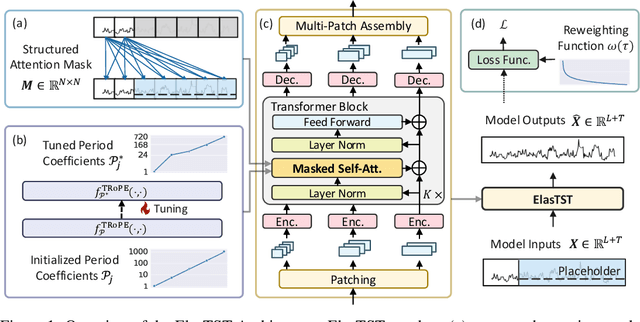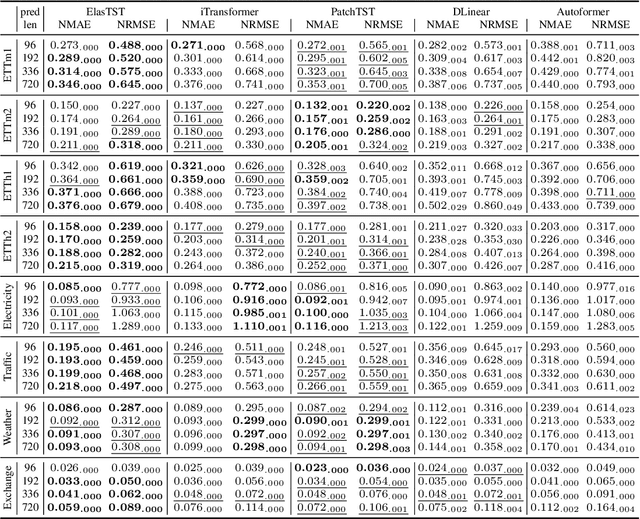Xiaofang Zhou
Pointing to a Llama and Call it a Camel: On the Sycophancy of Multimodal Large Language Models
Sep 19, 2025



Abstract:Multimodal large language models (MLLMs) have demonstrated extraordinary capabilities in conducting conversations based on image inputs. However, we observe that MLLMs exhibit a pronounced form of visual sycophantic behavior. While similar behavior has also been noted in text-based large language models (LLMs), it becomes significantly more prominent when MLLMs process image inputs. We refer to this phenomenon as the "sycophantic modality gap." To better understand this issue, we further analyze the factors that contribute to the exacerbation of this gap. To mitigate the visual sycophantic behavior, we first experiment with naive supervised fine-tuning to help the MLLM resist misleading instructions from the user. However, we find that this approach also makes the MLLM overly resistant to corrective instructions (i.e., stubborn even if it is wrong). To alleviate this trade-off, we propose Sycophantic Reflective Tuning (SRT), which enables the MLLM to engage in reflective reasoning, allowing it to determine whether a user's instruction is misleading or corrective before drawing a conclusion. After applying SRT, we observe a significant reduction in sycophantic behavior toward misleading instructions, without resulting in excessive stubbornness when receiving corrective instructions.
Data-Aware Socratic Query Refinement in Database Systems
Aug 07, 2025Abstract:In this paper, we propose Data-Aware Socratic Guidance (DASG), a dialogue-based query enhancement framework that embeds \linebreak interactive clarification as a first-class operator within database systems to resolve ambiguity in natural language queries. DASG treats dialogue as an optimization decision, asking clarifying questions only when the expected execution cost reduction exceeds the interaction overhead. The system quantifies ambiguity through linguistic fuzziness, schema grounding confidence, and projected costs across relational and vector backends. Our algorithm selects the optimal clarifications by combining semantic relevance, catalog-based information gain, and potential cost reduction. We evaluate our proposed framework on three datasets. The results show that DASG demonstrates improved query precision while maintaining efficiency, establishing a cooperative analytics paradigm where systems actively participate in query formulation rather than passively translating user requests.
EraRAG: Efficient and Incremental Retrieval Augmented Generation for Growing Corpora
Jun 26, 2025Abstract:Graph-based Retrieval-Augmented Generation (Graph-RAG) enhances large language models (LLMs) by structuring retrieval over an external corpus. However, existing approaches typically assume a static corpus, requiring expensive full-graph reconstruction whenever new documents arrive, limiting their scalability in dynamic, evolving environments. To address these limitations, we introduce EraRAG, a novel multi-layered Graph-RAG framework that supports efficient and scalable dynamic updates. Our method leverages hyperplane-based Locality-Sensitive Hashing (LSH) to partition and organize the original corpus into hierarchical graph structures, enabling efficient and localized insertions of new data without disrupting the existing topology. The design eliminates the need for retraining or costly recomputation while preserving high retrieval accuracy and low latency. Experiments on large-scale benchmarks demonstrate that EraRag achieves up to an order of magnitude reduction in update time and token consumption compared to existing Graph-RAG systems, while providing superior accuracy performance. This work offers a practical path forward for RAG systems that must operate over continually growing corpora, bridging the gap between retrieval efficiency and adaptability. Our code and data are available at https://github.com/EverM0re/EraRAG-Official.
ExeSQL: Self-Taught Text-to-SQL Models with Execution-Driven Bootstrapping for SQL Dialects
May 22, 2025Abstract:Recent text-to-SQL models have achieved strong performance, but their effectiveness remains largely confined to SQLite due to dataset limitations. However, real-world applications require SQL generation across multiple dialects with varying syntax and specialized features, which remains a challenge for current models. The main obstacle in building a dialect-aware model lies in acquiring high-quality dialect-specific data. Data generated purely through static prompting - without validating SQLs via execution - tends to be noisy and unreliable. Moreover, the lack of real execution environments in the training loop prevents models from grounding their predictions in executable semantics, limiting generalization despite surface-level improvements from data filtering. This work introduces ExeSQL, a text-to-SQL framework with execution-driven, agentic bootstrapping. The method consists of iterative query generation, execution-based filtering (e.g., rejection sampling), and preference-based training, enabling the model to adapt to new SQL dialects through verifiable, feedback-guided learning. Experiments show that ExeSQL bridges the dialect gap in text-to-SQL, achieving average improvements of 15.2%, 10.38%, and 4.49% over GPT-4o on PostgreSQL, MySQL, and Oracle, respectively, across multiple datasets of varying difficulty.
Towards DS-NER: Unveiling and Addressing Latent Noise in Distant Annotations
May 18, 2025Abstract:Distantly supervised named entity recognition (DS-NER) has emerged as a cheap and convenient alternative to traditional human annotation methods, enabling the automatic generation of training data by aligning text with external resources. Despite the many efforts in noise measurement methods, few works focus on the latent noise distribution between different distant annotation methods. In this work, we explore the effectiveness and robustness of DS-NER by two aspects: (1) distant annotation techniques, which encompasses both traditional rule-based methods and the innovative large language model supervision approach, and (2) noise assessment, for which we introduce a novel framework. This framework addresses the challenges by distinctly categorizing them into the unlabeled-entity problem (UEP) and the noisy-entity problem (NEP), subsequently providing specialized solutions for each. Our proposed method achieves significant improvements on eight real-world distant supervision datasets originating from three different data sources and involving four distinct annotation techniques, confirming its superiority over current state-of-the-art methods.
DIDS: Domain Impact-aware Data Sampling for Large Language Model Training
Apr 17, 2025Abstract:Large language models (LLMs) are commonly trained on multi-domain datasets, where domain sampling strategies significantly impact model performance due to varying domain importance across downstream tasks. Existing approaches for optimizing domain-level sampling strategies struggle with maintaining intra-domain consistency and accurately measuring domain impact. In this paper, we present Domain Impact-aware Data Sampling (DIDS). To ensure intra-domain consistency, a gradient clustering algorithm is proposed to group training data based on their learning effects, where a proxy language model and dimensionality reduction are employed to reduce computational overhead. To accurately measure domain impact, we develop a Fisher Information Matrix (FIM) guided metric that quantifies how domain-specific parameter updates affect the model's output distributions on downstream tasks, with theoretical guarantees. Furthermore, to determine optimal sampling ratios, DIDS combines both the FIM-guided domain impact assessment and loss learning trajectories that indicate domain-specific potential, while accounting for diminishing marginal returns. Extensive experiments demonstrate that DIDS achieves 3.4% higher average performance while maintaining comparable training efficiency.
A Pilot Empirical Study on When and How to Use Knowledge Graphs as Retrieval Augmented Generation
Feb 28, 2025Abstract:The integration of Knowledge Graphs (KGs) into the Retrieval Augmented Generation (RAG) framework has attracted significant interest, with early studies showing promise in mitigating hallucinations and improving model accuracy. However, a systematic understanding and comparative analysis of the rapidly emerging KG-RAG methods are still lacking. This paper seeks to lay the foundation for systematically answering the question of when and how to use KG-RAG by analyzing their performance in various application scenarios associated with different technical configurations. After outlining the mind map using KG-RAG framework and summarizing its popular pipeline, we conduct a pilot empirical study of KG-RAG works to reimplement and evaluate 6 KG-RAG methods across 7 datasets in diverse scenarios, analyzing the impact of 9 KG-RAG configurations in combination with 17 LLMs. Our results underscore the critical role of appropriate application conditions and optimal configurations of KG-RAG components.
Top Ten Challenges Towards Agentic Neural Graph Databases
Jan 24, 2025Abstract:Graph databases (GDBs) like Neo4j and TigerGraph excel at handling interconnected data but lack advanced inference capabilities. Neural Graph Databases (NGDBs) address this by integrating Graph Neural Networks (GNNs) for predictive analysis and reasoning over incomplete or noisy data. However, NGDBs rely on predefined queries and lack autonomy and adaptability. This paper introduces Agentic Neural Graph Databases (Agentic NGDBs), which extend NGDBs with three core functionalities: autonomous query construction, neural query execution, and continuous learning. We identify ten key challenges in realizing Agentic NGDBs: semantic unit representation, abductive reasoning, scalable query execution, and integration with foundation models like large language models (LLMs). By addressing these challenges, Agentic NGDBs can enable intelligent, self-improving systems for modern data-driven applications, paving the way for adaptable and autonomous data management solutions.
ElasTST: Towards Robust Varied-Horizon Forecasting with Elastic Time-Series Transformer
Nov 04, 2024



Abstract:Numerous industrial sectors necessitate models capable of providing robust forecasts across various horizons. Despite the recent strides in crafting specific architectures for time-series forecasting and developing pre-trained universal models, a comprehensive examination of their capability in accommodating varied-horizon forecasting during inference is still lacking. This paper bridges this gap through the design and evaluation of the Elastic Time-Series Transformer (ElasTST). The ElasTST model incorporates a non-autoregressive design with placeholders and structured self-attention masks, warranting future outputs that are invariant to adjustments in inference horizons. A tunable version of rotary position embedding is also integrated into ElasTST to capture time-series-specific periods and enhance adaptability to different horizons. Additionally, ElasTST employs a multi-scale patch design, effectively integrating both fine-grained and coarse-grained information. During the training phase, ElasTST uses a horizon reweighting strategy that approximates the effect of random sampling across multiple horizons with a single fixed horizon setting. Through comprehensive experiments and comparisons with state-of-the-art time-series architectures and contemporary foundation models, we demonstrate the efficacy of ElasTST's unique design elements. Our findings position ElasTST as a robust solution for the practical necessity of varied-horizon forecasting.
Exploring the Meaningfulness of Nearest Neighbor Search in High-Dimensional Space
Oct 08, 2024Abstract:Dense high dimensional vectors are becoming increasingly vital in fields such as computer vision, machine learning, and large language models (LLMs), serving as standard representations for multimodal data. Now the dimensionality of these vector can exceed several thousands easily. Despite the nearest neighbor search (NNS) over these dense high dimensional vectors have been widely used for retrieval augmented generation (RAG) and many other applications, the effectiveness of NNS in such a high-dimensional space remains uncertain, given the possible challenge caused by the "curse of dimensionality." To address above question, in this paper, we conduct extensive NNS studies with different distance functions, such as $L_1$ distance, $L_2$ distance and angular-distance, across diverse embedding datasets, of varied types, dimensionality and modality. Our aim is to investigate factors influencing the meaningfulness of NNS. Our experiments reveal that high-dimensional text embeddings exhibit increased resilience as dimensionality rises to higher levels when compared to random vectors. This resilience suggests that text embeddings are less affected to the "curse of dimensionality," resulting in more meaningful NNS outcomes for practical use. Additionally, the choice of distance function has minimal impact on the relevance of NNS. Our study shows the effectiveness of the embedding-based data representation method and can offer opportunity for further optimization of dense vector-related applications.
 Add to Chrome
Add to Chrome Add to Firefox
Add to Firefox Add to Edge
Add to Edge